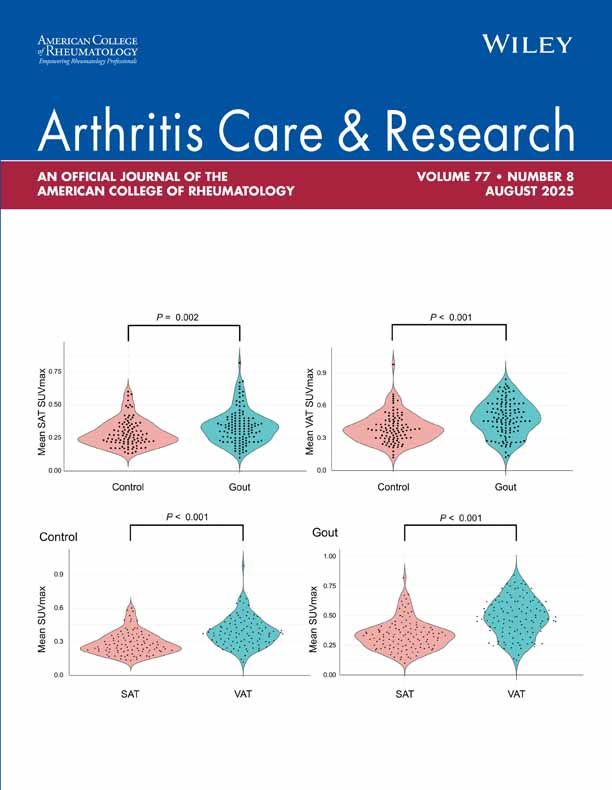A randomized controlled trial of early intervention with intraarticular corticosteroids followed by sulfasalazine versus conservative treatment in early oligoarthritis
Abstract
Objective
To determine the outcome after 52 weeks of early intervention with intraarticular corticosteroid injections followed by sulfasalazine versus conservative therapy in patients with recent-onset oligoarthritis in a randomized controlled trial.
Methods
Patients with ≤4 joints with clinical synovitis (disease duration ≤12 months) were randomized to early intervention (EI) with intraarticular methylprednisolone into all synovitic joints or to conservative treatment (CT) with nonsteroidal antiinflammatory drugs alone. Sulfasalazine was administered in both groups for persistent disease or disease that evolved into a polyarthritis. Primary outcome was complete response (CR) defined as the absence of synovitis at 52 weeks. Secondary outcomes included CR at weeks 4 and 12, function (Health Assessment Questionnaire), pain (0–100-mm visual analog scale), and work status.
Results
Fifty-nine patients (34 men, 25 women; mean age 32.9 years; median early morning stiffness 30 minutes) were randomized. At baseline, two-thirds reported that they were work impaired. At 52 weeks, 81% of patients in the EI group achieved CR compared with 57% in the CT group (χ2 = 3.833, 1 df, P = 0.05). In addition, 45% of patients in the EI group received sulfasalazine as opposed to 14% in the CT group (χ2 = 5.156, 1 df, P = 0.019). There were no differences in physical disability or work impairment between the treatment groups.
Conclusion
Oligoarthritis has a significant impact on function and work ability. Patients treated with EI using intraarticular corticosteroids followed by sulfasalazine therapy if resistant demonstrated reduced synovitis 12 months after treatment compared with those initially treated with more conservative therapy.




